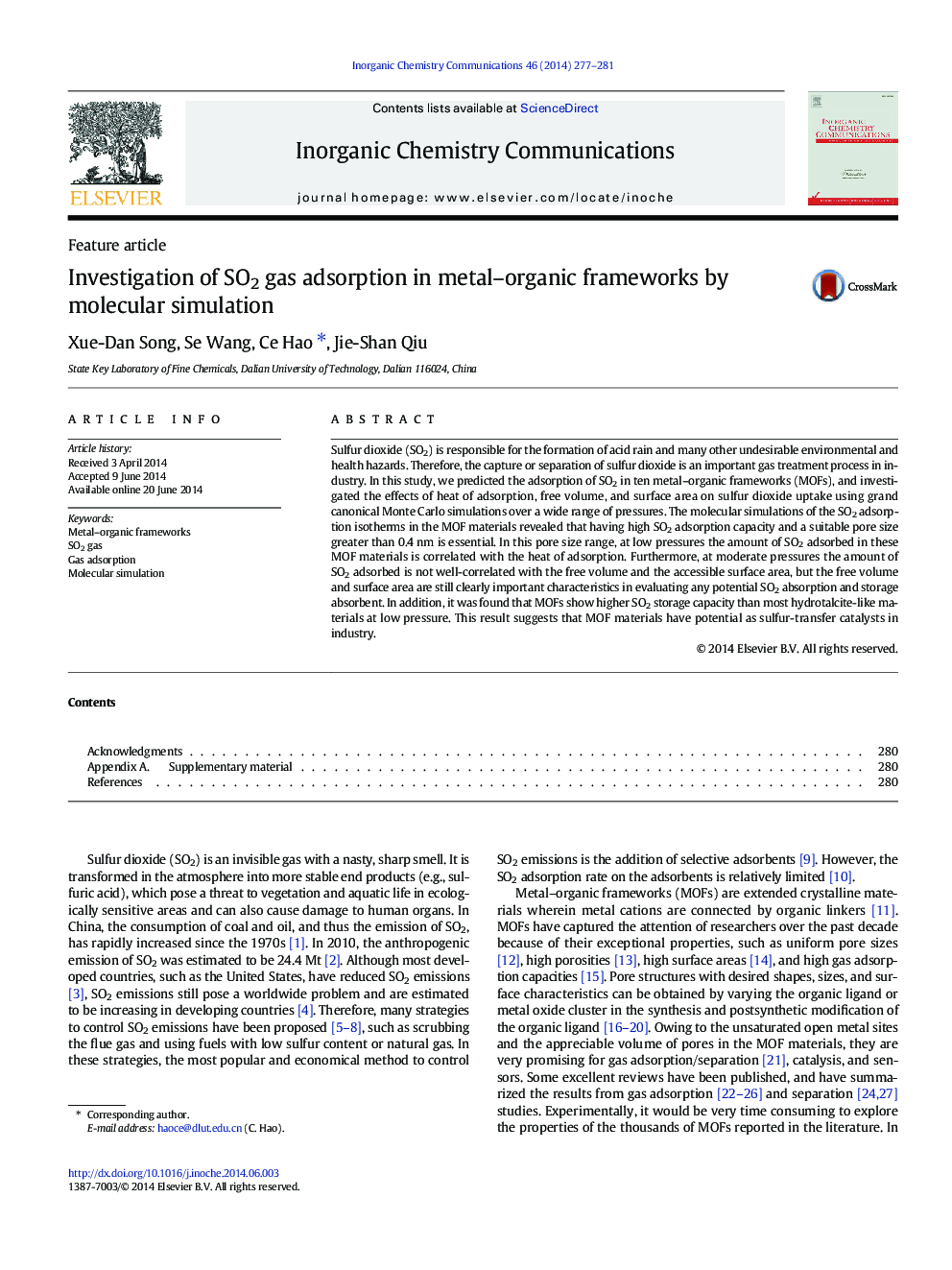| Article ID | Journal | Published Year | Pages | File Type |
|---|---|---|---|---|
| 1303551 | Inorganic Chemistry Communications | 2014 | 5 Pages |
•Reveal what kinds of MOF materials have good SO2 adsorption capacity.•Find some of MOFs show higher SO2 storage capacity than hydrotalcite-like materials.•ZIF-8 and Cu-BTC as the sulfur-transfer catalysts are expected to apply in industry.
Sulfur dioxide (SO2) is responsible for the formation of acid rain and many other undesirable environmental and health hazards. Therefore, the capture or separation of sulfur dioxide is an important gas treatment process in industry. In this study, we predicted the adsorption of SO2 in ten metal–organic frameworks (MOFs), and investigated the effects of heat of adsorption, free volume, and surface area on sulfur dioxide uptake using grand canonical Monte Carlo simulations over a wide range of pressures. The molecular simulations of the SO2 adsorption isotherms in the MOF materials revealed that having high SO2 adsorption capacity and a suitable pore size greater than 0.4 nm is essential. In this pore size range, at low pressures the amount of SO2 adsorbed in these MOF materials is correlated with the heat of adsorption. Furthermore, at moderate pressures the amount of SO2 adsorbed is not well-correlated with the free volume and the accessible surface area, but the free volume and surface area are still clearly important characteristics in evaluating any potential SO2 absorption and storage absorbent. In addition, it was found that MOFs show higher SO2 storage capacity than most hydrotalcite-like materials at low pressure. This result suggests that MOF materials have potential as sulfur-transfer catalysts in industry.
Graphical abstractWe investigated the effects of heat of adsorption, free volume and surface area on adsorption of SO2 in the MOFs using MC simulations. It demonstrates that some of the MOFs show higher SO2 storage capacity than most hydrotalcite-like materials. These MOFs as sulfur-transfer catalysts are expected to be applied in industry.Figure optionsDownload full-size imageDownload as PowerPoint slide
